Family: Tenthredinidae
Family common name: common sawflies
Subfamily: Blennocampinae
Tribe: Blennocampini
Genus: Eupareophora Enslin, 1914
Subgenera: none
The Tenthredinidae are the most species-rich family and are found throughout the world, in all continents but Antarctica. They are known as the “common sawflies.” They can generally be recognized by a cylindrical body and long, segmented antennaeantenna:
the sensory organ emerging from the front of the head, usually between the compound eyes and above the clypeus; includes the flagellum, scape and pedicel
 . Otherwise, they come in a variety of colors, sizes, and forms (Goulet 1992Goulet 1992:
. Otherwise, they come in a variety of colors, sizes, and forms (Goulet 1992Goulet 1992:
Goulet H. 1992. The genera and subgenera of the sawflies of Canada and Alaska: Hymenoptera. Symphyta. The insects and arachnids of Canada. Part 20. Agriculture Canada Publication.).
Sawflies in the subfamily Blennocampinae have a diverse set of life histories and habits. Many species are restricted to subtropical and tropical regions, but the genus is still fairly species-rich in North America. Blennocampinae includes many sawflies that feed on ornamental and forestry crops. This subfamily can be recognized by wing venationvenation:
the network of veins on a wing
and bidentatebidentate:
having two teeth; often used in descrbing mandibles or tarsal claws
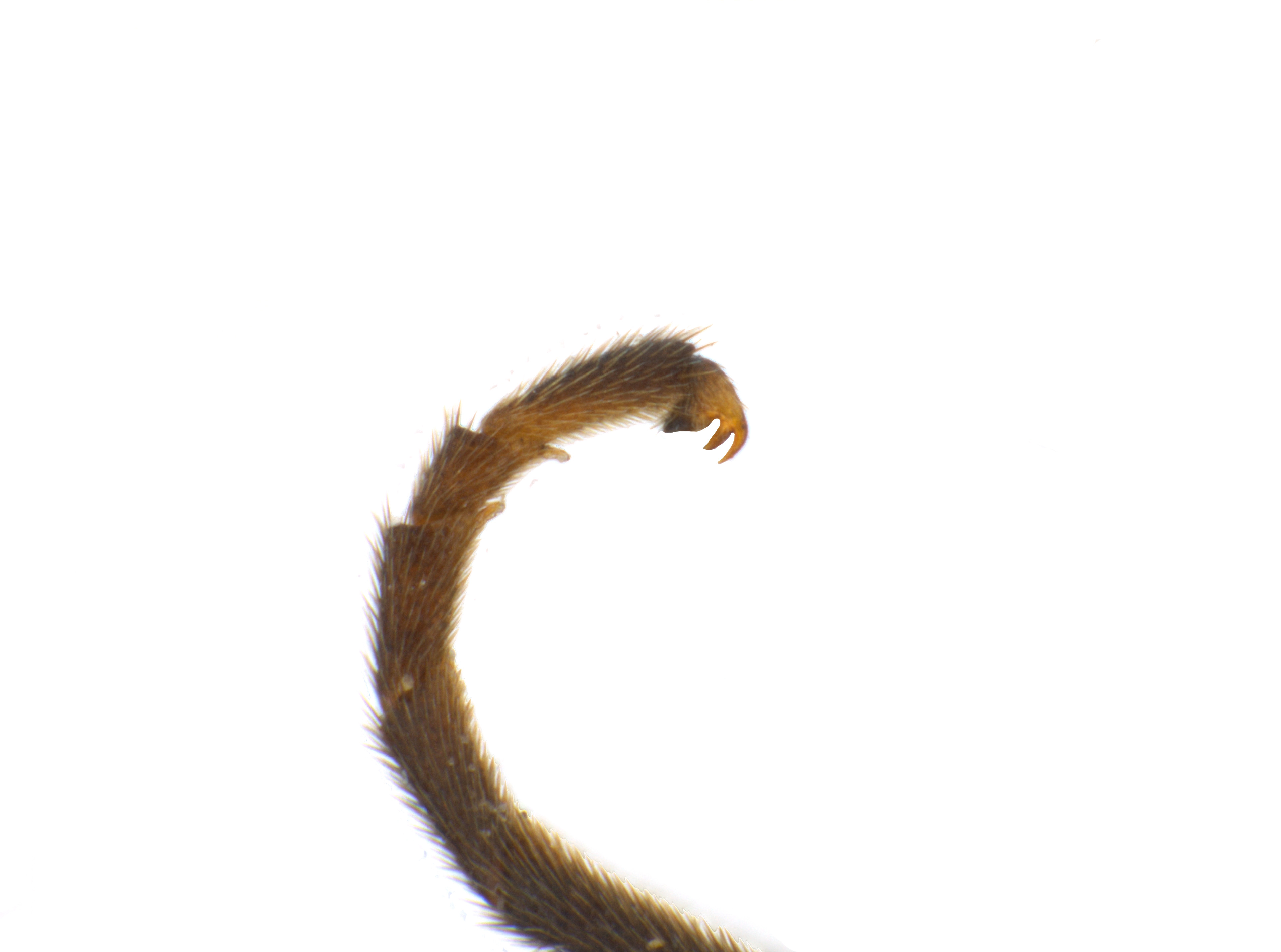 mandibles (Smith 1969dSmith 1969d:
mandibles (Smith 1969dSmith 1969d:
Smith DR. 1969d. Nearctic Sawflies. I. Blennocampinae: Adults and larvae (Hymenoptera: Tenthredinidae). Technical Bulletin, U.S. Department of Agriculture 1397: 1-176.).
Eupareophora is monotypicmonotypic:
describes having only one representative; ex. a genus that includes only one species
in North America. Eupareophora parca is about 5.8–6.5 mm in length and entirely black with light-colored striping on the legs and hyalinehyaline:
transparent; glassy
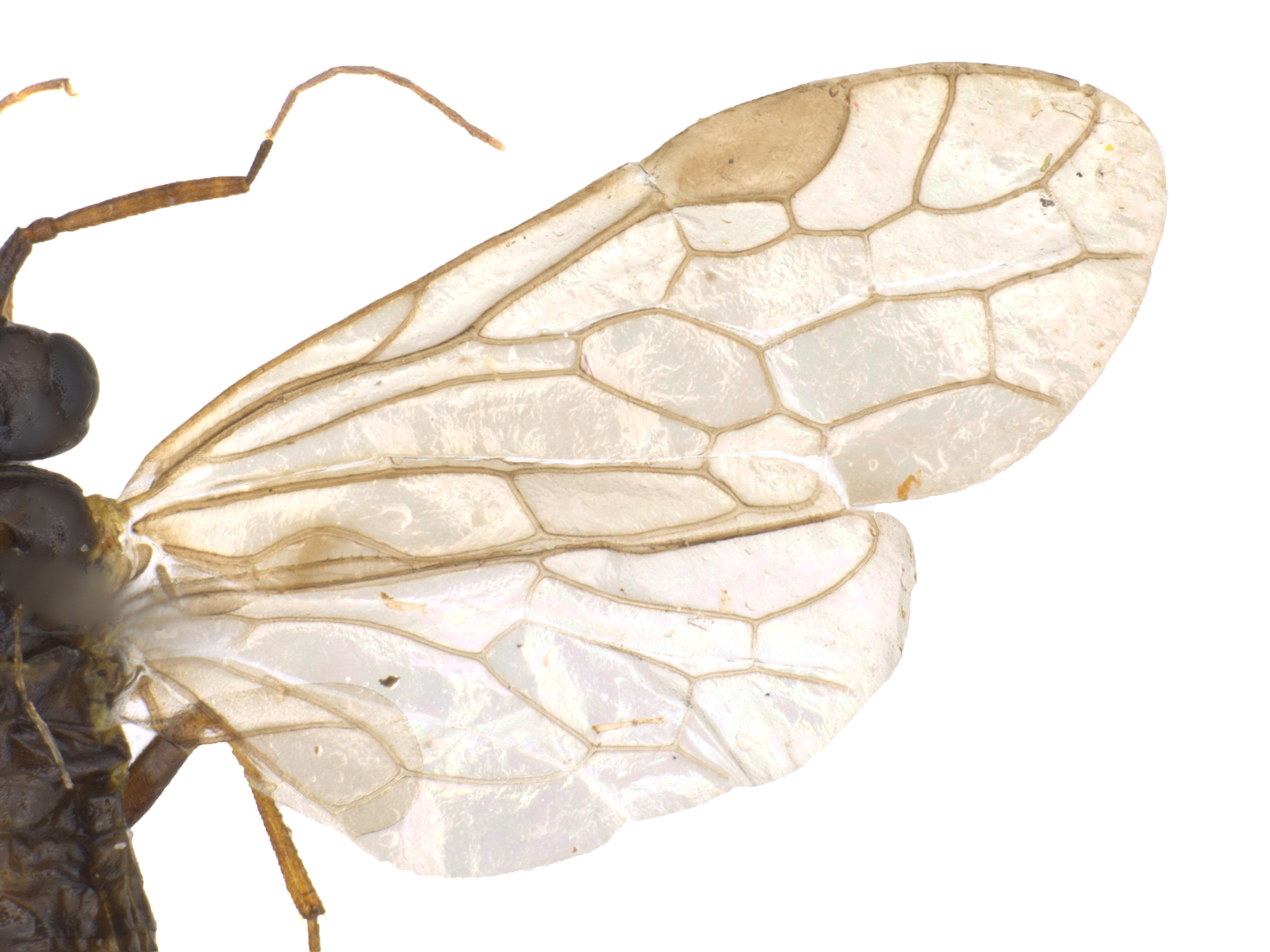 wings (Smith 1969dSmith 1969d:
wings (Smith 1969dSmith 1969d:
Smith DR. 1969d. Nearctic Sawflies. I. Blennocampinae: Adults and larvae (Hymenoptera: Tenthredinidae). Technical Bulletin, U.S. Department of Agriculture 1397: 1-176.).
There are two described extantextant:
in existence; opposite of extinct
species worldwide. One species occurs in North America (Taeger et al. 2018Taeger et al. 2018:
Taeger A, Liston AD, Prous M, Groll EK, Gehroldt T, and Blank SM. 2018. ECatSymmdash;Electronic World Catalog of Symphyta (Insecta, Hymenoptera). Program version 5.0 (19 Dec 2018), data version 40 (23 Sep 2018). Senckenberg Deutsches Entomologisches Institut (SDEI), Muuml;ncheberg. https://sdei.de/ecatsym/ Accessed: 28 Jan 2020.).
Subfamily characters
 veins Cu1 and 1m-cu between 120°–150° (Goulet 1992Goulet 1992:
veins Cu1 and 1m-cu between 120°–150° (Goulet 1992Goulet 1992: veins M and 1m-cu parallel (Smith 1969dSmith 1969d:
veins M and 1m-cu parallel (Smith 1969dSmith 1969d: veins 2A and 3A incomplete (Smith 1969dSmith 1969d:
veins 2A and 3A incomplete (Smith 1969dSmith 1969d:Genus characters
 slightly wider than long (Smith 1969dSmith 1969d:
slightly wider than long (Smith 1969dSmith 1969d: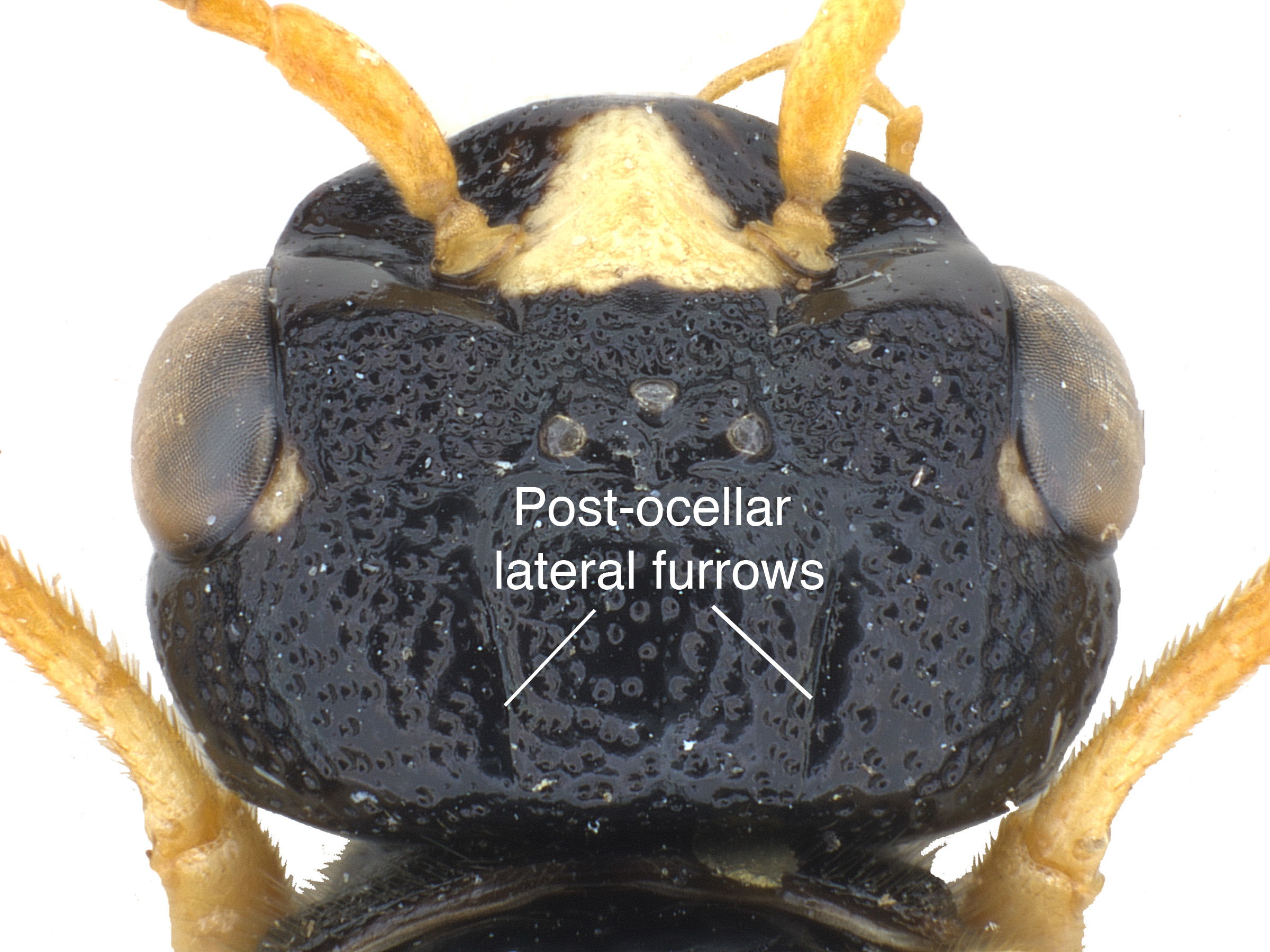 present and deep and punctured (Smith 1969dSmith 1969d:
present and deep and punctured (Smith 1969dSmith 1969d: (Smith 1969dSmith 1969d:
(Smith 1969dSmith 1969d: veins 2A and 3A curved at apexapex:
veins 2A and 3A curved at apexapex: veins M meeting Rs+M before meeting Sc+R (Smith 1969dSmith 1969d:
veins M meeting Rs+M before meeting Sc+R (Smith 1969dSmith 1969d: cellcell:
cellcell: M present (Smith 1969dSmith 1969d:
M present (Smith 1969dSmith 1969d: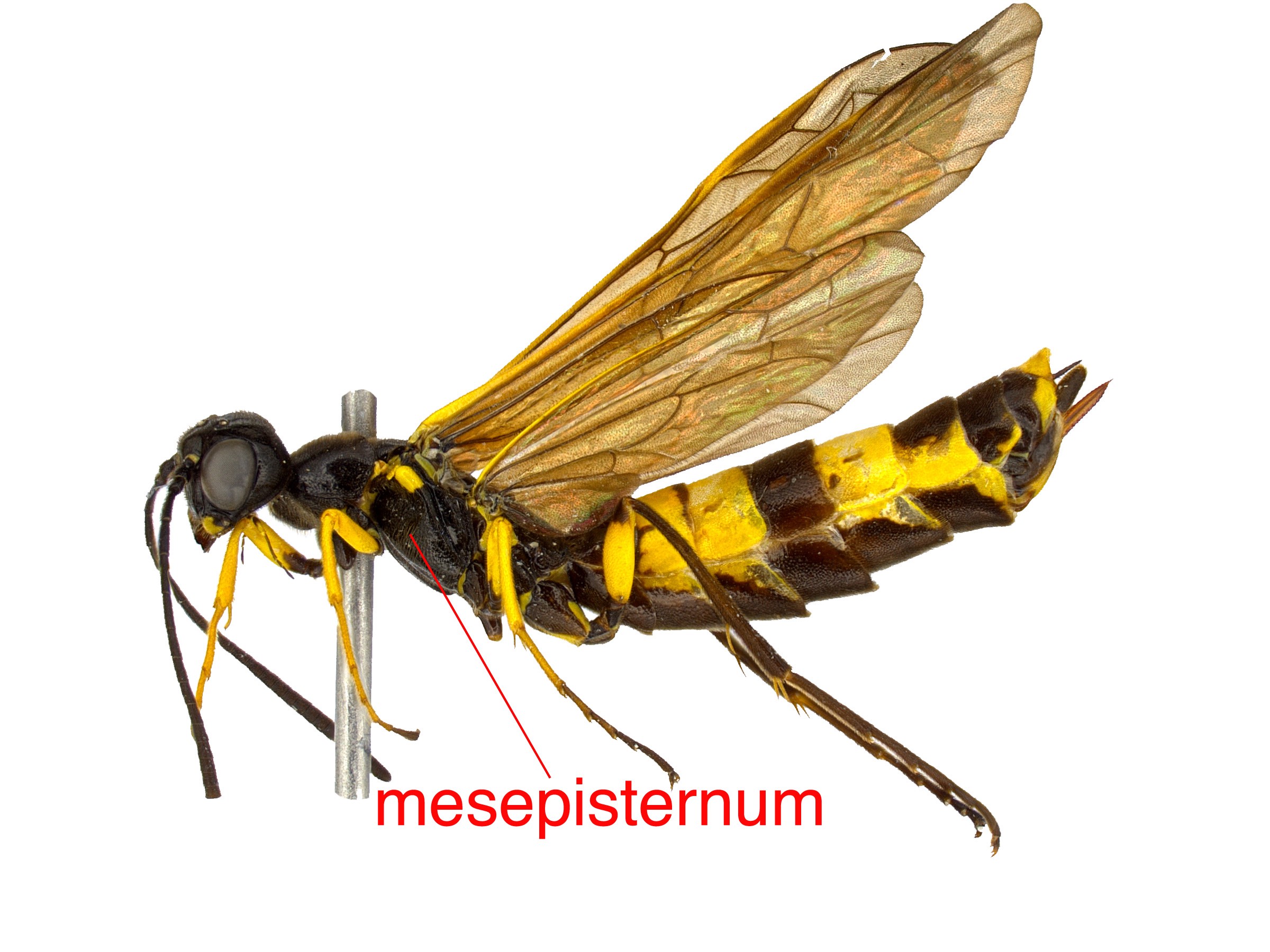 surface smooth and shining (Goulet 1992Goulet 1992:
surface smooth and shining (Goulet 1992Goulet 1992: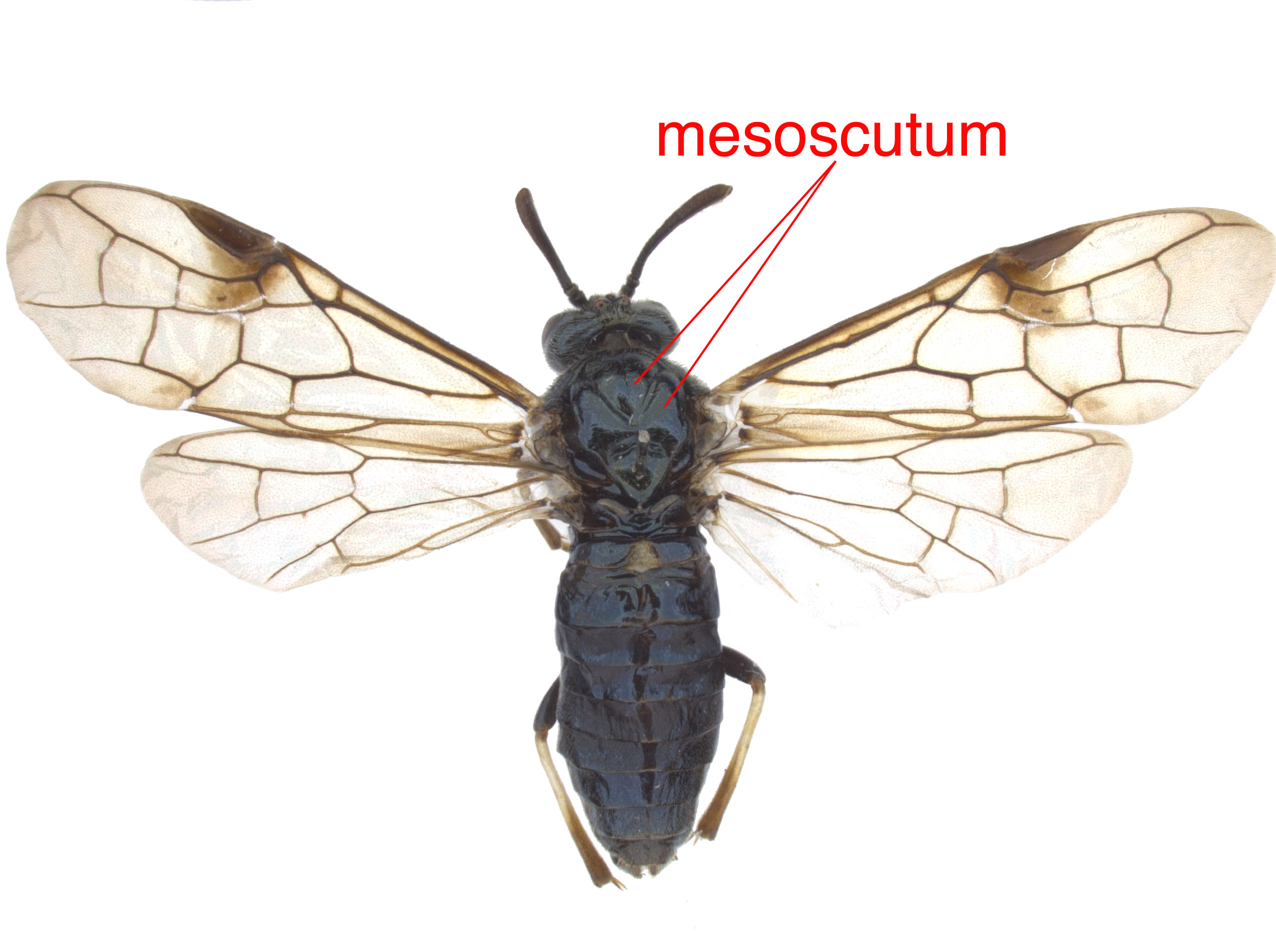 smooth; not pitted (Goulet 1992Goulet 1992:
smooth; not pitted (Goulet 1992Goulet 1992: simple (Smith 1969dSmith 1969d:
simple (Smith 1969dSmith 1969d:Eupareophora can be confused with similar species in the subfamily Blennocampinae. It can be distinguished from most other genera by the simple tarsal clawtarsal claw:
sharpened appendage emerging from the apex of the tarsus
 and the deep postocularpostocular:
and the deep postocularpostocular:
describes area behind the compound eye
furrowfurrow:
a groove or linear depression
 (Smith 1969dSmith 1969d:
(Smith 1969dSmith 1969d:
Smith DR. 1969d. Nearctic Sawflies. I. Blennocampinae: Adults and larvae (Hymenoptera: Tenthredinidae). Technical Bulletin, U.S. Department of Agriculture 1397: 1-176.).
none
In North America, Eupareophora feeds on Fraxinus americana (white ash), Fraxinus nigra (black ash), Fraxinus oregona (Oregon ash), Fraxinus pensylvanicus (green ash), Carya illinoensis (pecan), and Chionanthus (fringe tree) (Smith 1969dSmith 1969d:
Smith DR. 1969d. Nearctic Sawflies. I. Blennocampinae: Adults and larvae (Hymenoptera: Tenthredinidae). Technical Bulletin, U.S. Department of Agriculture 1397: 1-176.).
Eupareophora parca is commonly known as the spiny ash sawfly and is documented as a pest on ash trees. Large infestations have resulted in noticeable defoliation in urban areas. Females oviposit into the underside of leaflets near the midrib. LarvaeLarva:
the immature stage of holometabolous insects
 are light green and in a late instarinstar:
are light green and in a late instarinstar:
a stage of development between molts in insects; often is a larval stage
have colorful fleshy spines. The mature larvaelarva:
the immature stage of holometabolous insects
 fall to the ground and overwinter in cells in the soil (Williams 2007Williams 2007:
fall to the ground and overwinter in cells in the soil (Williams 2007Williams 2007:
Williams DJ. 2007. Biology of the spiny ash sawfly, Eupareophora parca (Hymenoptera: Tenthredinidae: Blennocampinae), in Edmonton, Alberta. The Canadian Entomologist 139: 269-277. https://doi.org/10.4039/n06-026).
World: This genus is known from North America, and from central and eastern Europe (Taeger et al. 2018Taeger et al. 2018:
Taeger A, Liston AD, Prous M, Groll EK, Gehroldt T, and Blank SM. 2018. ECatSymmdash;Electronic World Catalog of Symphyta (Insecta, Hymenoptera). Program version 5.0 (19 Dec 2018), data version 40 (23 Sep 2018). Senckenberg Deutsches Entomologisches Institut (SDEI), Muuml;ncheberg. https://sdei.de/ecatsym/ Accessed: 28 Jan 2020.).
North America: Eupareophora parca occurs in two ranges in the eastern United States and southeastern Canada, and in coastal California and Oregon (Smith 1969dSmith 1969d:
Smith DR. 1969d. Nearctic Sawflies. I. Blennocampinae: Adults and larvae (Hymenoptera: Tenthredinidae). Technical Bulletin, U.S. Department of Agriculture 1397: 1-176.).
Map data from: GBIF.org (29 October 2019) GBIF Occurrence Download Eupareophora
Details about data used for maps can be found here.